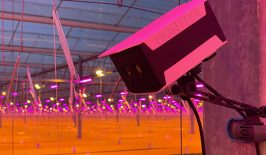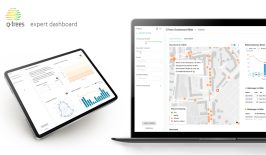In the face of escalating concerns about climate change, the aviation industry is turning to cutting-edge technologies to mitigate its environmental impact. A recent report from the Intergovernmental Panel on Climate Change (IPCC) revealed that contrail clouds contribute significantly to aviation’s global warming footprint, accounting for approximately 35 percent of its overall impact. However, an innovative solution powered by artificial intelligence (AI) is emerging to tackle this issue head-on.
Understanding contrails and their impact
Contrails, or condensation trails, form when aircraft fly through humid regions, creating clouds of ice crystals that contribute to the greenhouse effect. Recognising the need for a sustainable aviation future, researchers are exploring ways to minimise contrail formation without compromising operational efficiency.
An initiative spearheaded by Google’s research team, Project Contrails, aims to leverage AI in predicting and avoiding contrail formation. By amalgamating vast datasets, including weather information, satellite imagery and historical flight data, AI algorithms can generate precise predictions about when and where contrails are likely to form.
The approach yielded promising results
Google’s team’s strategy combines satellite imagery and computer vision to detect contrails in real-time. To put their theories to the test, a group of pilots at American Airlines engaged in 70 test flights over six months, utilising AI-based predictions to navigate around areas prone to contrail formation.
The results were impressive – the predictions led to a remarkable 54 percent reduction in contrails during the test flights, marking a significant stride towards making contrail avoidance a tangible reality.
As always, money is a factor when it comes to adopting strategies. However, one of the key factors driving the adoption of AI-based contrail avoidance is its potential cost-effectiveness. Contrail avoidance costs are estimated to be in the range of 5-25 USD per ton of CO2 equivalent. This places the technology among the most economical climate solutions available to the aviation sector. However, while contrail avoidance is considered a cost-effective climate solution, the initial investment required for the implementation of AI systems and the associated training for pilots isn’t necessarily cheap. Airlines, who are already facing tighter margins after the COVID pandemic, could well be hesitant to adopt the technology if the economic benefits do not outweigh the costs in the short term.
Contrail avoidance might not go far enough
Initial costs are not the only potential issue with contrail avoidance technology. While it certainly presents a promising solution to reduce the aviation industry’s environmental impact, there are challenges associated with this approach. As with any technology promising to make an impact on our climate’s future, it’s important to take a deeper look at these aspects.
To begin, one could argue that the accuracy and reliability of AI predictions may be influenced by various dynamic factors such as changing weather conditions and the nature of air traffic. Inaccurate predictions could lead to unnecessary route diversions, which could have the potential to affect operational efficiency.
Likewise, altering flight paths to avoid contrail formation could have unintended consequences. For instance, rerouting flights could result in increased fuel consumption, negating the environmental benefits achieved by contrail reduction. Although Google’s internal review suggested that these increases were offset, a holistic and unbiased assessment of the environmental impact of altered flight paths is essential.
Similarly, as the aviation industry continues to grow, critics question the long-term sustainability of contrail avoidance. The scalability of the technology to accommodate an increasing number of flights and the evolving nature of air travel patterns need careful consideration for it to remain effective over time. This adoption of contrail avoidance on a broad scale requires regulatory approval and procedure standardisation. International aviation regulations are extremely restrictive, so ensuring that the technology complies with them, as well as rigorous safety standards, is crucial for its widespread acceptance.
Another major concern is Google’s history of airbrushing its aviation emission data. Can huge for-profit tech companies such as Google be trusted to be objective when it comes to managing our data?
Aviation’s pursuit of sustainability could reach new heights with the integration of AI to tackle contrail formation. The success of Google’s contrail avoidance initiative signals a paradigm shift in how the industry approaches environmental challenges. With further research and development, AI-powered contrail avoidance could emerge as a cornerstone in the broader effort to make air travel more eco-friendly and sustainable for future generations.








